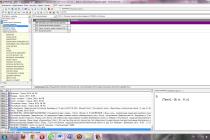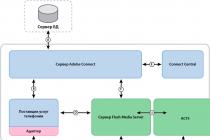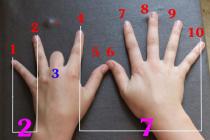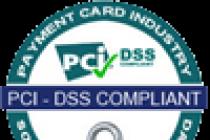The Windows 10 operating system tries to do everything by itself: from installing drivers to optimizing applications. It turns out she does it well, but if you leave all important processes on the conscience of the operating system, then soon you can find a bunch of incomprehensible applications and services that will periodically start, self-update and eat up all the resources of your computer. If you want to configure Windows 10 so that your computer does not have to share performance with incomprehensible services, while leaving everything useful that the system can give you, you will have to combine automatic installation with manual. It is not so easy to do this, because Windows 10 practically does not tolerate interference in its processes, but if you follow all the instructions below exactly, then you will not have any problems with setting up. And if some of the possible mistakes associated with the installation and configuration of the system, then we will help you completely eliminate them.
Why configure Windows 10 manually
One of the main pride of Windows 10 is the complete automation of everything that is possible, including setting and optimizing the operating system itself. Idealized option Windows preparation 10 to use, as Microsoft sees it, is extremely simple:
- You are installing Windows 10.
- The system starts up, downloads all drivers and updates by itself, configures itself and restarts.
- Windows 10 is ready to go.
In principle, this scheme works well, at least in most cases. And if you have relatively good computer and you do not experience discomfort after automatic Windows settings 10, you can leave it as it is.
Now let's list the cons automatic tuning:
- Microsoft has a lot of low-quality programs and games that need to be promoted somehow - some of them will be installed automatically on your computer;
- Microsoft wants you to pay or watch ads, or better all at once;
- Windows 10 automatic configuration does not take into account outdated and weak hardware;
- Windows 10 is the most spyware operating system in history, and it collects information at the expense of your computer's resources;
- a huge number of secondary services that run in the background and eat up RAM;
- automatic system updates that can take you by surprise;
- application updates, service updates and upgrades just to eat up as much resources and traffic as possible;
- not everything works perfectly and malfunctions are possible, and the system will not show it.
Roughly speaking, without manual configuration, the computer will be used not only by you, but also by completely unnecessary services that completely fit the definition of viral.
At the same windows time 10 is a surprisingly good and highly efficient system that really does a lot of good in automatic mode... If you want to cut out all the imposed garbage and keep all the good that Windows 10 can give you without turning the system into a log along the way, you have to spend a little time and do manual configuration. It will take you two hours, but on the way out you will get the most better system of all available, besides free.
Settings that need to be done after installing the OS
As mentioned above, setting up Windows 10 is time consuming and will take much longer than in the case of previous versions. The main task will be to limit the amount of downloaded junk, while allowing everything else to install, and then overwrite and disable everything that could not be prevented.
The sequence of the steps is very important, try not to get out of order and restart your computer after each step.
Store activation and restriction
The main task of this stage is to restrict the store through a firewall, Windows activation can be performed at the very end of the setup, but it is better now.
If your computer is already connected to the internet, disconnect the connection as soon as possible.
After connecting to the Internet, a massive download of drivers, updates and applications will begin. Let's start preventing the download of unnecessary applications.
- Open the "Start" menu, find "Store" there and launch it.
Open the "Start" menu, find "Store" there and launch it
- Click on the button with the profile picture at the top of the window that opens and select "Settings".
Click on the button with the profile picture at the top of the window that opens and select "Settings"
- Uncheck the box automatic update applications.
Uncheck Automatic App Updates
- Now find the control panel through the search and open it.
Search for the control panel and open it
- Go to the system and security category.
- Open "Allow Application Interaction Through Windows Firewall".
Open "Allow application interaction through Windows Firewall"
- Click "Change settings", find "Store" in the list and remove all checkmarks from it. Then confirm the changes.
Click "Change settings", find "Store" in the list and remove all checkmarks from it
- Now it is advisable to activate Windows. It is best to use a KMS activator. If you have not prepared the activator in advance, download it from another device, since it is advisable to make the first connection to the Internet with already activated Windows 10.
For Windows activation 10 best to use KMS activator
- Reboot your computer.
Reboot your computer
System auto-tuning
Now it's worth letting Windows configure itself. This is the key point at which the Internet turns on.
- In the previous step, we limited the Microsoft store, but on some versions of Windows 10 this may not help (very rare cases). Launch the store again, click on the user button and open Downloads and Updates.
Start the store again, click on the user button and open "Downloads and Updates"
- Drag the window down so it doesn't get in your way. Throughout the current stage, periodically glance at the store window. If a download icon appears (marked in green in the screenshot), click "Stop All" and go through the crosses on all applications from the download queue. Required applications and there are no important updates here.
If the download icon appears (marked in green), click "Stop All" and go through the crosses on all applications from the download queue
- Now it is highly desirable to connect all devices to your computer: printer, joystick, and so on. If you are using multiple screens, connect everything, press the key combination "Win + P" and select the "Expand" mode (this is what you will change after the reboot).
If you are using multiple screens, connect all, press the key combination "Win + P" and select the "Extend" mode
- It's time to connect to the internet. Windows 10 should do this without drivers, but if you have problems install a driver for network card or Wi-Fi module(download only from the manufacturer's website). More details about manual installation of drivers are described in the next step. Now you only need to connect the internet.
Windows 10 should see the Internet without drivers, but if you have any problems, install the driver for the network card or Wi-Fi module
- Bulk download, installation and optimization will now begin. Do not try to do anything with the computer: the system needs all possible resources. Windows will not notify you about the end of the process - you have to guess yourself. Your guideline will be the moment of installing the driver for the video card: it will be installed correct resolution screen. After that, wait another 30 minutes and restart your computer. If the resolution does not change even after an hour and a half, or the system automatically reports completion, restart the computer.
Installing missing drivers
As mentioned above, Windows 10 auto-tuning may fail, which is especially important in the case of installing drivers on outdated hardware, which is not taken into account. Even if it seems to you that all the drivers are in place, it is better to check it yourself.
- Open Control Panel and expand the Hardware and Sound category.
Open Control Panel and expand the Hardware and Sound category
- Go to Device Manager.
Go to "Device Manager"
- Now you need to find all devices with a yellow triangle on the icon, they will be visible immediately. If something like that was found, right-click on it and select "Update Driver".
You need to find all devices with a yellow triangle on the icon and update their drivers
- Choose automatic search... Then the system will tell you everything itself.
Choose automatic search, then the system will tell you everything by itself
- If it does not help, which is very likely, right-click on the device again and go to its properties.
Right-click on the device and go to its properties
- The "General" tab will contain all the information that the system can learn about this equipment. Based on these data, you need to find on the Internet, download and install the missing driver yourself. If a manufacturer is listed, first go to its website and search there. You should download drivers only from official sites.
Guided by the data that has opened, you need to find on the Internet, download and install the missing driver yourself
If you have any problems installing the drivers, follow the link below with an article on this topic or watch a short video dedicated to manual installation drivers.
Video: how to install the driver manually on Windows 10
System update
There are many variations of Windows 10, sharpened for different hardware and bit depth, but during installation it is installed universal version systems to minimize the size of the image. Windows 10 has an Update Center that automatically updates the system to the latest version and changes the Windows variation to the most compatible one. We are not interested in updating the version: the changes are minimal, completely invisible and not always useful. But optimization is very important.
As with the second run, this step can take a long time.

If nothing was found, then the system has already managed to update itself.
Ensuring peak performance
Disable auto updates
You should start by disabling automatic system updates. Windows 10 updates come out very often and nothing useful for ordinary users do not contain. But on the other hand, they know how to start independently at the most inopportune moment, which puts pressure on the performance of your computer. And after you want to reboot quickly, you suddenly have to wait half an hour for the updates to be accepted.
You can still update the system as described in the previous step, but now you will be in control of this process.
- Go through the search to "gpedit.msc".
Go through the search to "gpedit.msc"
- Follow the path "Computer Configuration / Administrative Templates / Windows components"And click on" Center Windows updates».
Follow the path "Computer Configuration / Administrative Templates / Windows Components" and click on "Windows Update"
- Open Configure Automatic Updates.
Open "Configure Automatic Updates"
- Check the "Disable" box and confirm the changes. You don't need to reboot yet.
Check the box "Disable" and confirm the changes
General service limitation
As you probably know, Windows 10 actively spies on its users. But you don't need to worry about your personal data: Microsoft is not interested in it. You need to worry about the resources of your computer, which are spent on this espionage.
In order not to waste time digging around the corners of your system, we will use the Destroy Windows Spying program, which will not only protect your computer from espionage, but also remove all associated threats to your computer's performance.

Radical limitation of services
Destroy Windows 10 Spying kills only the most annoying processes, but much remains untouched. If you are determined to be sterile, you can fine-tune your services using the ShutUp10 program.

Installing programs
Windows 10 is almost ready for work, all that remains is to clean up the remaining garbage and heal registry errors. You can do this now, but it's better after you install everything you need, as new errors and garbage may appear.
Install programs and games, customize your browser and do whatever you are used to. As for the required software, Windows 10 has the same requirements as previous versions, with a few exceptions.
Here are the programs that are already included and you do not need to install them:
- archiver;
- emulator of images;
- DirectX or its updates;
- antivirus (if you are not very familiar with the Internet, then it is better to ignore our advice and still install a third-party antivirus).
If you are in doubt about the set of necessary software, here is an exhaustive list of programs that you may need in the future:
- third party browser (best Google chrome or Mozilla Firefox);
- Microsoft Office (Word, Excel and PowerPoint);
- Adobe Acrobat;
- players for music and video (we recommend AIMP for music and KMPlayer for video);
- GIF Viever or another third-party gif viewing program;
- Skype;
- Steam;
- Ccleaner (it will be described below);
- translator (for example, PROMT);
- antivirus (installing it on Windows 10 is rarely useful, but this is a very controversial issue - if you dare, we recommend Avast).
Remember to restart your computer at the end.
Garbage, Registry and Ccleaner
After installing programs and updates, a decent amount of registry errors and temporary files, which are also called junk files, should accumulate on your computer.
- Download, install and run Ccleaner. In the "Cleanup" tab in the Windows section, check all the boxes except for " Network passwords"," Shortcuts and in the Start menu "," Shortcuts on the desktop "and the entire group" Other ". If you have customized MIcrosoft Edge and plan to use it, you should not mark its group either. Don't rush to start cleaning.
In the "Cleanup" tab in the Windows section, check the boxes except for "Network passwords", "Shortcuts and in the Start menu", "Shortcuts on the desktop" and the entire group "Other"
- Go to the "Applications" section and uncheck all the boxes there. Now click "Clear".
Go to the "Applications" section and uncheck all the checkboxes there, then click "Clear"
- Open the "Registry" tab and click "Search for problems".
Open the "Registry" tab and click "Search for problems"
- When the analysis is complete, click "Fix Selected ...".
When the analysis is complete, click "Fix Selected ..."
- It is better to keep backups.
- Now click "Fix Selected".
Now click "Fix Selected"
- Go to the service tab. In the "Uninstall programs" section, you can erase all optional applications that managed to slip through during the system update. You will not be able to do this using standard methods.
In the "Uninstall programs" section, you can erase all optional applications that managed to slip through during the system update
- Go to the "Startup" section. In the Windows internal tab, select all the items and click Turn Off.
In the inner Windows tab, select all the items and click "Turn off"
- Go to the internal Scheduled Tasks tab and repeat the previous step. Then restart your computer.
Go to the internal tab "Scheduled Tasks" and repeat the previous step
It is advisable to leave the Cceaner program on the computer and check the system for registry errors every few months.
Grub recovery
If your computer is running Linux in parallel, then after installing Windows 10 you will have a not very pleasant surprise: when you turn on the computer, you will no longer see the menu for selecting the Grub operating system - instead, it will start immediately Windows boot... The fact is that Windows 10 uses its own bootloader, which is automatically installed along with the system itself and completely grinds Grub with itself.
You can still get Grub back in the standard way using the LiveCD, but in the case of Windows 10, this can be done much easier through the command line.

Video: 4 Ways to Recover Grub
Possible problems and solutions
Unfortunately, the installation of Windows 10 does not always go smoothly, as a result of which errors may occur, from which no one is immune. But most of them are treated very simply and even inexperienced users can eliminate them.
General way (solves most problems)
Before moving on to a detailed examination of each problem, we describe the general way to solve errors provided by Windows 10 itself.

Lost hard drive
- Open the Start menu and search for "diskmgmt.msc".
Open the Start menu and search for "diskmgmt.msc"
- If you see an unrecognized disk at the bottom of the window, click on it and select "Initialize Disk".
If you see an unrecognized disk at the bottom of the window, click on it and select "Initialize Disk"
- If there is no unrecognized disk, but there is unallocated space, click on it and select Create Simple Volume.
If there is unallocated space, click on it and select "Create Simple Volume"
- Leave the maximum value unchanged and click "Next".
Leave the maximum value unchanged and click "Next"
- Give the volume its initial letter and click Next.
Give the volume its initial letter and click "Next"
- As file system select NTFS.
Select NTFS as the file system
Sound problems
Before proceeding with this instruction, try the general method, which is described at the beginning of the chapter.
- Right-click on the sound icon in the taskbar and select "Playback Devices".
Equal-click on the sound icon in the taskbar and select "Playback Devices"
- Right click on the active device and go to its properties.
Right click on the active device and go to its properties
- Open the "Advanced" tab, set the minimum audio format and apply the changes.
Open the "Advanced" tab, set the minimum audio format and apply the changes
If you have a laptop and this method does not help you, install the original drivers from the manufacturer.
Blue screen
Typically, this problem occurs during the installation of updates, when the system boot screen is prematurely attempted. The correct solution is to simply wait for the updates to install (this can take up to an hour). But if this does not help, you do not have time or you are firmly convinced that the system is frozen, you can restart your computer: the system will not try to install updates again and will start immediately. This can be done in two ways:

Black screen
If right after turning on the computer shows you a black monitor, you are faced with an error of a crashed video driver or a problem with its compatibility. The reason for this is the automatic installation of the wrong driver. If you encounter this problem, you need to manually install the video driver from the manufacturer, but it will be a little more difficult to do this, since you will not be able to log into the system.
Also, this problem can occur if you installed the x86 driver on a 64-bit system (usually there is no problem with this, but sometimes exceptions occur). If you cannot find a suitable driver, you will have to reinstall the system to a different bit depth.
In rare cases, this issue can be caused by another driver that is not related to the video card.

The computer slows down or heats up
The problem lies in persistent attempts by services to update, which they do not always succeed in. If you encounter this problem, then you have not taken the steps described in the "Ensuring maximum performance" stage - be sure to follow them.
If you are dealing with a laptop and it has not stopped warming up, try installing official drivers from manufacturers ( required driver should be named ChipSet). If this does not help, you will have to limit the processor power (this does not mean that now it will work below normal: it is just that Windows 10 made a mistake and uses the processor in a merciless mode).
- Open Control Panel and go to the "System and Security" category.
Click "Change advanced power settings"
- Expand Processor Power Management, then Maximum Processor State, and set both values to 85%. Then confirm the changes and restart the computer.
Set both values to 85%, confirm changes and restart your computer
OS selection appeared
If at Windows installation 10 you haven't formatted system disk, you might get a similar error. The reason is that the previous operating system was not removed correctly and now your computer thinks that there are several systems installed on it.

Screen flickers
Typically the cause of this problem is driver mismatch, but there are exceptions in the form of two conflicting services. So do not rush to install the official drivers and try another method first.
- Use the "Ctrl + Shift + Esc" key combination to open the task manager and click "Details".
Call the task manager and click "Details"
- Go to the Services tab and click Open Services.
Click "Open Services"
- Find "Control Panel Item Support ..." here, right-click on it and select "Properties".

In the startup type select "Disabled" and confirm the changes
- Now find "Registration Service Windows errors”And repeat the same with her. Then restart your computer.
Find "Windows Error Logging Service" and repeat the same with it
- If all else fails, install the driver for the video card from the manufacturer.
There is no internet connection, the monitor resolution has changed or the system does not see the video card
If you came to this section, you need to be sure to install the factory drivers, which are posted on the manufacturer's website. Especially often, owners of Chinese laptops that use rare hardware or modified versions of it face similar problems. The main reason for the problem is that Windows 10 cannot clearly identify one of the components of your computer (for example, a video card) and tries to install the most suitable driver, which is completely inappropriate.
If you have a laptop and cannot find a driver for your video card, look for a VGA driver.
Battery problems
The problem with the battery in laptops is almost the most common, especially with the Lenovo brand. Most often it is presented in the form of a message: "The battery is connected, but not charging." About all this Windows developers 10 are well aware: if you use the general method of solving problems, which is presented at the very beginning, Windows will independently analyze your computer, determine everything possible reasons problems and he will tell you about the options for eliminating the error.
Through remedy Windows troubles 10 you can fix every laptop battery problem you can
Also try to go to the website of the manufacturer of your laptop and download the Chipset driver there - Windows will not tell you about this option.
When upgrading to Windows 10, Kaspersky or another program was uninstalled
Windows 10 really does not like intrusions, its system processes and everything that threatens them. If during the system update you lost your antivirus, Ccleaner or another similar program, then they were listed as potentially dangerous and Windows removed them as a threat. This cannot be changed, but you can reinstall the lost program. But if you reinstall Windows and choose the "System Update" option, everything will be deleted again.
Configuring Windows 10 manually is a long undertaking, but after completing all these steps, you will get the best and most productive system available. Moreover, Windows 10 is very self-contained and very rarely needs to be reinstalled, which means that you will have to do all this infrequently.
Windows Explorer improvements
Universal and built-in applications. New Windows Store
What features do we lose when we move to Windows 10?
Application "Parameters"
Tablet mode, Aero Snap and other improvements
Microsoft Edge
If you used the "Settings" application in Windows 8 and 8.1, then you are familiar with its main problem - you open the application, understand that the necessary functions are not presented and you are safely sent to the Control Panel.
Indeed, the Control Panel remains in Windows 10, and if you are an advanced user, you will use this tool from time to time. However, most regular users will never use the panel's services.
The "Settings" application has become a more comprehensive and functional solution with a logical arrangement of individual controls.
In early preliminary Windows assemblies 10 it seemed like the Control Panel would continue to dominate matters fine tuning systems, but everything changed very quickly - now "Parameters" contain everything you need in 9 different sections.
While constantly testing the new OS, the techradar.pro expert last used the Control Panel in March. This indicates a rare need to look there to solve any configuration issue, now all this is conveniently done using the "Parameters" application.
There are a few things left that require a Control Panel, such as a factory reset network adapter- but you must admit that these manipulations do not have to be performed often.
Each category in "Options" contains subcategories with concise names. The application is not as intuitive as the Control Panel, but the user can always find what he needs. There has been a rather significant breakthrough compared to a similar tool in Windows 8 and 8.1.

English-speaking users will not be able to simply invoke the Settings app with voice assistant Cortana, but also select a specific subsection. Unlike Windows 8, search usually finds exactly the categories you want, not everything.

The Windows operating system is one of the most famous in the world. In the latest version 10, Microsoft has added many new and useful functions that greatly simplify the life of users. But are they really all needed for stable system operation and good performance? Unlikely.
Setting up a clean Windows 10
Immediately after installing the operating system, you should decide which settings are needed and which ones are better to get rid of. Each user decides for himself what he needs and what not, however, special attention should be paid to some functions:1. Telemetry.
Initially, Windows 10 has automatic tracking of user actions. More precisely, search queries while working at a computer or other device:
- all written queries in the search bar of the Start panel or in Explorer;
- all verbal requests via microphone (for the built-in Cortana assistant).
However, many users are seriously concerned about such interference with their privacy. Microsoft does not explain in any way what data is collected or how it is processed.
Moreover, if the default settings have not been changed, then the system will not inform the user about their presence in any way. In this regard, many hastened to limit this function as much as possible in order to protect themselves and maintain confidentiality.
To disable this feature feedback just follow a few simple steps:


Thanks to this action the system will stop collecting input data, voice distinctiveness, contact information, etc.
But it should also be remembered that it is impossible to completely disable the Telemetry function. There are certain data that Windows 10 will always exchange with its services. What exactly this data is is unknown.
The only 100% way to completely prohibit data collection from users is to stop using Windows 10. But disabling these features will severely limit Telemetry, so you no longer need to worry about personal safety. Plus, performance will increase, and computer resources will be slightly freed.
2. Updates between users.
By default, Windows 10 uses an Internet connection to send downloaded updates peer-to-peer to other users. Exchange of traffic between different computers can significantly reduce the speed of downloading updates, but not many people consider such connections to be safe.
If desired, this function can be disabled:
- in the Start panel, select Settings;
- then the item Update and Security is selected;
- on the left side, select the Windows Update section;
- at the bottom you need to open Additional parameters;
- then the Select button is clicked on how and when to receive updates, and the radio button is set to Disabled.

If desired, you can enable the exchange of updates with other devices within local network... To do this, you need to return the switch to the Enabled position, and at the bottom select the Computers in the local network item.
After these steps, updates will no longer be transferred to other users, and all the necessary ones will be downloaded directly from Microsoft servers.
Windows 10 will automatically restart your computer to install the downloaded updates. And although you can set the mode of activity when this happens, this is not convenient for everyone. Permanent reboots can also be disabled, and as a result, restart the computer manually, at a convenient time:

After these steps, Windows 10 will stop transmitting the Wi-Fi password to other users. Optionally, you can leave those categories of contacts that will nevertheless automatically connect to the network.
Windows 10 includes a Notification Center. Thanks to him, messages will constantly pop up about all important changes or events that need the user's attention. However, what the system considers important rarely coincides with the really important alerts. Moreover, for many users, such notifications only interfere in principle.
To disable them, you need to go to Start - Settings - System, and then select the Notifications and actions tab. Here you can manually set which notifications will be shown by the system and which will not. It is permissible to either selectively change the settings or completely disable them in the system.

Moreover, if the user does not want to receive notifications from specific application, then, scrolling down the page, below you can see all the applications installed on the computer.

If not listed required application it may have been installed incorrectly or not entirely legally. They don't go to jail for this, but the system can categorically refuse to "be friends" with such a program. If notifications continue to arrive, and the settings do not have the desired option, you can try restarting your computer. As a last resort, correct reinstallation of the program should help.
What settings should you pay attention to first of all after installing the Windows 10 operating system, you will learn from this video.
Automatic updates
In addition to the basic parameters that should be changed in the system, there are some special ones. One of these is the complete disabling of all updates.It should be remembered that as soon as this option is disabled, all responsibility for the safety of the device will lie with the user. From now on, modern viruses will be able to infect the system without any problems, because updates will no longer be installed in a timely manner.
The following steps are workarounds, that is, they require some delving into hidden settings Windows 10. All procedures should be done at your own risk, but many users report significant improvements in system performance and overall experience.
The first step is to call the Run menu. It can be found by searching in the Start panel or by pressing the Win + R hotkeys. In the window, enter the command gpedit.msc (Group Policy).
Then you need to select the Administrative Templates menu, which is located inside the Computer Configuration item.

Next, select the All parameters item and in a rather voluminous list you need to find the Configure automatic update item.

On this item, double-click and select the Enabled value. Then, in the drop-down list below, select item 5 (Allow the local administrator to select settings).

From now on, it will be possible to set the update settings, but first you should go to the Control Panel (see), and then to System and Security.

If there is no such menu, then you need to switch the display of icons to Category. This is done in the right upper corner window. In the next Windows Updates menu in the drop-down list, you can set an acceptable method for receiving updates. For example, prohibit automatic downloads and manually install the necessary updates.
However, if there is a need to completely disable updates, then this can be done in the following way:
- you should go to Local group policies as mentioned earlier and return to the Configure Automatic Updates menu;
- instead of all the previous actions, you must select the Disabled item and apply the changes.

After that, the system will not only stop installing updates in automatic mode, but will not even check for them. From now on, the steps to install them will have to be done independently. If, of course, this is the need and desire of the user.
Key nuance
If Windows 10 appeared as a result of an upgrade from a previous version (Windows 7, Vista, etc.), then you need to free up the occupied hard disk space.Windows 10 stores files of the old system for 30 days, so that for some time it is possible to roll back the system to the previous version. For example, if Windows 10 does not suit the user or critical errors at work.
The folder with the old operating system is located on the system drive (usually local drive C) and is called Windows.old. This is a very "heavy" folder - its size can reach 40 GB and even more, depending on the size of the previous system.
However, it is unlikely to be able to remove it just like that. A certain algorithm of actions is required to do everything correctly and to neutralize the likelihood of errors.
You need to go to the This computer menu (by right-clicking on the Start button), after which a window will appear with the contents hard disk and available local drives. Next, select the drive containing the Windows.old folder. Most often, this is the system drive on which Windows 10 is installed.
Then you need to right-click to open the context menu of the selected disk and click on Properties.

In the window that opens, you need to click on the Disk Cleanup button.

After a little analysis, the program will ask which files need to be deleted. You need to select the item Clear system files... This will be followed by another analysis and additional cleaning options will appear in the general menu.
Here you should select the item Previous Windows installations.

After clicking the OK button, the previous version of the operating system will be completely removed from the computer. You may also need to restart your computer to complete this procedure.
This will free up a significant portion of the disk space, which will positively affect the performance of Windows 10. Learn more about how to speed up Windows 10 -.
This completes the system setup. After these actions, there is a serious leap in productivity and an improvement in the quality of work at the computer. Windows is a great operating system, but as in any other case, some functions are simply unnecessary. And although they should help, in fact, they only interfere with many users.
Greetings, dear friends. Let's talk today about setting up Windows 10. Since it is becoming more and more popular, and not so long ago I set it up on my tablet. Also, if you just installed or bought a device on windows 10, then in any case it is best to configure it.
We will not go deep into this topic, just let's list a few sharp reasons to understand how to set up windows 10:
- Initially, the system does not work 100%... You just can't please the user, there are millions of them, and the creators of the operating system want to show all the possibilities, well, or the maximum possible. And everyone's needs are different, so it's better to sharpen the system for yourself.
- Services started, applications who you possibly can never use, and they load the system.
- Perhaps the computer is old or just weak, but I want to work on windows 10.
- Powerful games demand maximum performance.
- Over time, the system becomes littered with various kinds of garbage. must be cleaned.
- Perhaps standard means and the programs do not suit you, some need to be disabled, or maybe just change the shell, the type of system.
- Just You love to change something with your own hands anytime, anywhere 😮 .
After simple steps, you can safely work in the system and periodically perform cleaning and adjustment. So the system will work for a long time without failures and critical errors.
System update
There is a lot of controversy over whether or not to update the system. In my opinion need it right... After all, very often there are improvements, some mistakes are corrected, all this improves the system. Yes, I do not argue, it happens that an update is installed, and the system starts to glitch. Let's consider how to configure windows 10 for updates.
I haven't noticed this on windows 10 yet, but in any case, you can rollback as soon as you notice. Besides, faster system will break if you don't update it. Since the programs that you use, in any case, you reinstall or simply install other new programs over time, and the system is hard to work, all sorts of problems may arise, but this is a separate topic for conversation.
And so, we need to go to Options and click "Update and Security"... Further "Checking for an update"... And if there are updates, immediately load and install.
Updating windows 10 and configuring updates
After installing all the updates, below we click Advanced options and at the very top change the parameter to "Notify when a reboot is scheduled"... This is to prevent the system from restarting itself. And you never know, maybe you are playing at an important moment, or you have a serious event, and the system took over and restarted itself - a crash. Whatever it is, we change the parameter.
 Changing the update settings
Changing the update settings We also put two checkboxes below... The first is to keep all windows products updated. The second is to prevent the system from starting to download updates. This is necessary in order for you to manually enable the download of updates exactly when you need it. For example, when the computer is idle, you can enable downloads and updates.
It's just that during the download and update the system is loaded, and if the Internet is also weak, then everything lasts a long time. Some are beginning to get confused, they say the system is slowing down, it means it is bad, but in fact it was just an update.
Below we click on the "Choose how and when to get updates" option... Turn off the parameter as in the screenshot below. This is so that updates are not downloaded from different sources.
 remove loading from different places
remove loading from different places Also right away, you can disable Windows Defender(menu on the left). I use third-party antivirus software, so I don't need a defender. Going to this tab, turn off three items, as in the screenshot.
By the way, about how to choose good antivirus, can .
 we turn off the defender
we turn off the defender Disable login password.
This does not affect performance, but personally I don’t need this function, maybe you don’t need it either, then it will come in handy. Although it still refers to the topic of how to configure windows 10.

This function is not necessary, if you need a password, then do not disable it, now go ahead and figure out how to set up windows 10.
Configuring the System settings.
Before making the settings, it is better to check if all the drivers are installed, if not, install. And you need to install all the programs that you use. Only then adjust and clean.
now we disable notifications and remove some unnecessary applications.
Configuring Privacy Settings.
Now we go to Confidentiality option(Start - Settings-Privacy). Look carefully here, turn off what is not useful to you. We continue to answer the question of how to configure windows 10, so here we disable what applications can refer to. In principle, I always turn off almost everything and do not worry. For some applications, I separately open access when they ask.
- In the General tab - disable the first three functions... They are responsible for in-app advertising.
 General tab - turn off the first three
General tab - turn off the first three - Now in the location tab turn off the item "Location"... Then apps won't ask for your geographic location.
 disable the location item
disable the location item - In the Camera tab, turn off the top checkbox... Then apps won't use your camera. But if you use the camera in some applications, you can simply leave the applications that you use, where the camera is needed, and turn off the rest.
 camera shutdown
camera shutdown - The Microphone tab is the same as with the Camera.
- In Contacts, turn off the first two points as in the screenshot.
 disconnect contacts
disconnect contacts - In the Calendar tab, turn off the lowest- Application connector.
 disable the connector in the calendar
disable the connector in the calendar - We turn off the call log, more precisely, the topmost point.
 No call log needed
No call log needed - Email, just like above, turn off... So that applications do not have access to it.
- Messaging - disable.
- Radio - turn off.
- Disable synchronization too.
 Disable synchronization
Disable synchronization
And most importantly, Background Apps. Here we turn off everything that we do not use every day, all the time. The point is that all that enabled - always works, but what we do not use, we do not need, we turn it off so that the system does not load.
 Disable background applications
Disable background applications Editing the system properties.
Opening now start-up system... On the left we select item - System protection... We will enable it on the C drive, or on the drive where you have the operating system installed. To do this, click on desired disk, I have C, below we press configure.
Now point - turn on and set the slider below about 5-8 GB, that's quite enough. and click OK.
 Turn on system protection on the system disk
Turn on system protection on the system disk We continue to figure out how to configure windows 10. Now on the left, under System Protection, select - Additional system parameters, Performance - parameters.
 Performance settings
Performance settings The visual effects option opens. Check the box for Provide best performance... Then all the checkmarks in the lower list will be removed. And now in this list we put only 5 checkboxes, as in the screenshot... You will not see much difference, and the system will load less.
 customize visual effects
customize visual effects Now next to Visual effects click the Advanced tab and below In paragraph Virtual memory click the Change button ...
change the swap fileNow on the list select the system drive, I have C and below put a tick No swap file... And here on another disk we put a swap file twice as much as your RAM... For example, you have 2 GB of RAM, then set the paging file to 4 GB or 4000 MB. We write in two fields, opposite to the item Specify the size.
Changing the System Configuration.
We continue and answer the question of how to set up windows 10, describing everything as I do it myself for my computer, which serves me faithfully for a long time and without failures.

- Service wireless Bluetooth (if not using it),
- Bluetooth support service (if not using it),
- Cryptographic Services,
- Fax,
- Geographic location service,
- Manager of downloaded maps,
- Telephone communications,
- Dispatcher automatic connections remote access,
- Store demo service,
- Task Scheduler,
- Smart Card Removal Policy
- Configuring a Remote Desktop Server,
- Touch keyboard service (only if you do not use it, for example, you have a tablet),
- Telephony,
- Remote Desktop Service,
- Wallet service,
- Windows store service,
- X-box Authentication Manager,
- Saving games on X-box Live,
- X-box Live network service.
Now click apply.

We clean from unnecessary files.
Even if you just installed operating system, you need to clean disks from excess debris even necessary.
For this we go to my computer (this computer) and to the system drive, I have it C, right-click, in the menu, click properties... Below will be Disk Cleanup button, press it and wait as long as necessary while the system scans the disk.
 Disk cleanup
Disk cleanup Next, a window will open, there we put a checkmark everywhere, below press the button "Clear system files", also put a checkmark everywhere and click OK... The procedure takes time. It is better to do this cleaning more often, about once every 3 months. The first one goes clean for a long time, the next ones are already faster. There is nothing to be afraid of, this tool is very reliable and of high quality.
 select the checkboxes everywhere
select the checkboxes everywhere We continue to figure out how to configure windows 10. Next, after cleaning, also in the properties of drive C, click next tab - Service. Checking for errors... Even if for the first time he says that a check is not required, we do a check. If it finds something, the system will fix it or notify you and click fix.
 Disk check
Disk check Go to Optimizing and defragmenting the disk, Click Optimize... In the window that opens, click on the system drive, I have C. And below click Analyze... After the process has ended, click Optimize nearby. The process takes time.
 Disk optimization
Disk optimization These steps need to be repeated from time to time with your computer. This will make it work faster. After optimization, we close everything.
Then again press the combination Win + R, the Run window will open. where write% temp%, a window will open where select all folders and delete... We skip what is not deleted.
Cleaning the temporary folderThis opens a closed folder with temporary files, they need to be cleaned periodically.
Power settings.
We continue to figure out how to configure windows 10. Go to Control Panel - Hardware and Sound - Power Supply... Down here put a tick on "High performance«.
 power settings
power settings If you have a simple desktop computer, you don't need to do anything else. If you have a laptop or tablet, it is better to leave the scheme "Balanced (recommended)" and just get out. This will save battery power.
Also on the right, you can click on "Settings for switching to sleep mode" and set there both from the Network and from the Battery, never go into sleep mode. Again, if the computer is always on the network.
 Setting the transition to sleep mode
Setting the transition to sleep mode I think we have done the most basic way of setting up windows 10. Of course, there are actually a lot of settings, but we did the most basic thing. The system will now work more stable. The main thing do not forget to periodically clean and optimize disks... It is from the garbage that the big problems begin.
Besides, it's better to customize the start menu itself... Reduce some icons and, most importantly, remove those icons that you do not use.
There should not be many shortcuts, folders on the desktop, all this loads the system. Try to clean up your desktop and disks right away, while you work. This helps the system to run quickly.
As an alternative to antiviruses and various cleaning programs, I advise you to install 360 total security. It protects the computer well and cleans it the same way. In addition to this, there is much more interesting.
Among other things, I strongly advise you to read the article: We also wrote a lot about optimization.
That's all for me, stay with us further. Subscribe to our articles. Write in the comments, I will answer everyone and share the article in social networks... Goodbye to everyone.
Bonus put a video about detailed setting the system, very useful, consists of 2 parts.
How to tune windows 10 for maximum performance updated: November 9, 2019 by the author: Pavel Subbotin
The ability to switch to a dark theme was one of the most anticipated Windows functions... Indeed, with a lack of light, such a color scheme is less tiring for the eyes. Previously, it was possible to install a black interface background for the tenth version of the OS. But the developers listened to users in the Windows 10 update too. Anniversary Update finally added a simple official way.
Opening the section "Options" → "Personalization" → "Colors", you will see at the bottom of the item "Select the default application mode." If you activate dark mode here, the background of the Windows interface will partially switch to black. The same applies to some standard and third-party programs from the Windows store.
Separately, you can enable the dark theme in Edge browser... To do this, click on the three dots in the upper right corner of the program window, then click "Options" and under "Select a theme" select "Dark".
By the way, if you prefer Google Chrome, you can download the dark theme from the Google store and even install it.

Sitting at the computer in the dark, you could notice how quickly your eyes get tired. This is because at night the display becomes too bright for a room without sunlight.
Microsoft took care of this issue with Windows 10 update too Creators Update added a special monitor color mode "". It can be configured in the section "Settings" → "System" → "Screen".
When this mode is active, the system changes the temperature of the colors so that they do not tire the eyes in a dark room.

As using windows residual files and other debris accumulate in it, which clogs HDD and slows down the OS. There are many third-party utilities that can solve these problems. But until recently, there was no standard solution.
After updating to Windows 10, the Creators Update appears on the system, which clears the device's memory. You can activate and configure it in the "Settings" → "System" → "Storage" section under the item "Memory control".

Windows 10 has a set standard applications, with which you can work with music, videos, web pages and other files without third-party software. For each file type, the system defaults to one of these preinstalled programs (or warns that it is not supported). This is why, for example, when you click on a downloaded music track, Windows immediately plays it in Groove.
But if you want to replace the standard player, browser and other programs with third parties, it is most convenient to do this in a special section of settings. Go to Settings → Applications → Default Applications and select here the programs you installed that Windows should use by default for various tasks.

The password assigned to the account Windows entry, protects personal data and user settings. This function will be relevant for you if unauthorized persons have physical access to the computer. Of course, if you try hard, this protection can be bypassed. But in most situations, it will be enough.
You can put it, remove it or reset it, if you suddenly forget, in the section "Options" → "Accounts" → "Login Options".

By default, when you launch File Explorer in Windows 10, a quick access window opens to frequently visited folders and last viewed files. Perhaps this option suits you entirely. But in previous versions of the OS, "Explorer" immediately opened the section "This computer", and there are users who are used to it.
If you are one of them, or if you just find it more convenient to see local drives in Explorer right away, you can return the old view. To do this, open "Explorer", click "View" → "Options" and in the item "Open Explorer for" select "This computer".

Windows has long allowed you to hide files and folders, making them invisible. Thus, it is convenient to hide directories with important contents, so as not to accidentally delete anything you need. You can make an object visible or hidden through the context menu: just right-click on a folder or file, click "Properties" and check or uncheck the box next to the "Hidden" item.
In addition, for convenience, the system can display its extension at the end of the name of each file: .exe, .png, .docx or letter designation any other format.
By default, Windows 10 does not show items that have been hidden by developers or the user, just like file extensions. But you may need to display them. For example, to get into hidden folder or see the format of the photo.
To enable the display of hidden objects or file extensions, open "Explorer", click "View" and check the necessary items: "Hidden items" or "File name extensions".

Windows 10 displays notifications on the screen like a typical mobile OS. In order not to be distracted by anything unnecessary, you can configure them in the "Settings" → "System" → "Notifications and actions" section. Here you can choose what type of messages will be sent to the screen, and set the notification options separately for each application.
In this section, you can also choose buttons for quick actions that will appear on the notification panel. They allow, for example, to instantly activate the night mode of the display, adjust its brightness or add notes to OneNote.

Errors in the system or third-party software, as well as incorrect user actions may cause Windows to malfunction.
Fortunately, there is a mechanism that returns the OS to its normal state. This is a recovery service. It creates a copy of important system components every time you update Windows, a driver, or install new program, and saves it to your hard drive. In most cases, you will be able to recover normal work systems from such backups (recovery points).
To go to service settings, type in Windows search"Recovery", click on the result and click in the opened window "System recovery settings".
Once on the "System Protection" tab, select your system drive (usually drive C), then click on the "Configure" button and enable system protection. After that, specify the amount of disk space that will be allocated for storing backups. The more space, the more restore points you will have at your disposal. When it ends, the new points will replace the old ones. After all, click OK.
Now, if the need arises, you can return to the "System Protection" tab. To do this, there is a "Restore" button here.
But keep in mind that backups contain incomplete windows image, but only important system files.
10. Screen Calibration

Windows has a built-in display calibrator that you can use to improve color reproduction. The program will display simple step by step instructions... Having done everything as she tells you, you are in the optimal way. No special knowledge is required for this.
To start the calibrator, type the word "calibration" in the system search and click on the found item. Then follow the prompts of the system.
11. Action log settings
The Windows 10 April 2018 Update added the Activity Log feature to the system. With its help, you can at any time see what documents and web pages you have interacted with in the last days, and return to work on them. Moreover, the log can display actions not only from the current computer, but also from all other devices connected to your account Microsoft.

To customize your activity history, go to Start → Settings → Privacy → Activity Log. Check the box "Allow Windows to collect actions from this computer" if it was not enabled by default. Then select the checkbox "Let Windows sync my activities from this computer to the cloud" if you want information about the current computer to appear on other devices connected to it.

When done, click on the icon next to the Start icon on the taskbar. A timeline will appear where you can see previously opened documents.
12. System update options
Windows can get bored with offers to upgrade at the most inopportune moment. And sometimes it restarts the computer when you are not expecting it at all. To insure yourself against such cases, set up the so-called "Active period". This is the time of day during which you usually work at the computer. Windows will not update during the specified hours.
To configure the Active Hour, go to Start → Settings → Windows Update and click Change Active Hour. Specify the work schedule at the computer and save the changes.















